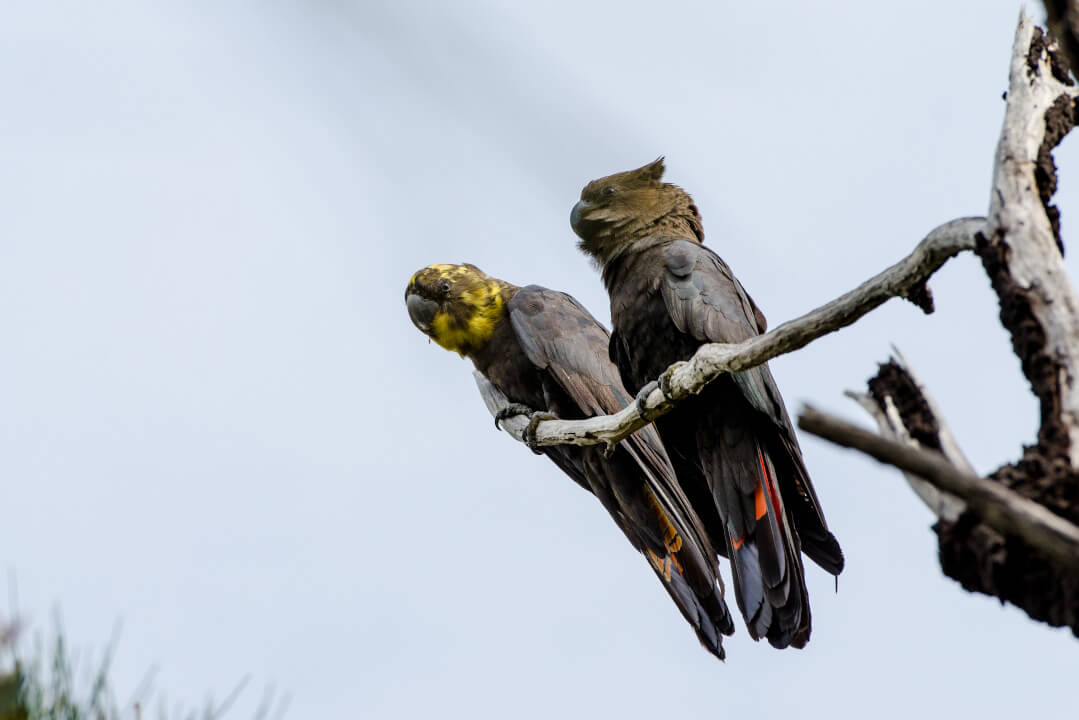Call for mid-north coast eagle eyes to spot Glossy Black-Cockatoos
Eagle-eyed residents on the NSW mid-north coast are encouraged to report sightings of glossy black-cockatoos to the NSW Government’s Biliirrgan project.
These spectacular birds with a distinctive call are known as Biliirrgan in Gumbaynggirr language.
The “Glossy Squad” of volunteers is helping the Saving Our Species (SoS) team find and monitor nesting hollows where glossies breed.
Glossy black-cockatoos are threatened in NSW, and little is known about the size of the mid-north coast population or the locations of their nests.
By reporting sightings, residents will support the Biliirrgan project in understanding more about these birds, aiding in their monitoring and protection from potential extinction.
The team is particularly interested in sightings from the Nambucca, Bellingen, Coffs, and Clarence local government areas.
Glossy black-cockatoos are easy to identify as they are the only black cockatoo with red tails on the Mid North Coast of NSW. Females (or flossies) have yellow on their heads.
They only eat the seeds from she-oak (Allocasuarina) cones and need to drink water each evening, when they can be seen at puddles, dams, waterholes, creeks or rivers.
Volunteers are asked to report:
- Locations where birds are drinking
- Pairs or lone birds with regular evening flight paths
- Female birds begging males for food
Glossy sightings can be reported through the Biliirrgan App online survey, accessible via the online form, or by emailing [email protected].
Birdlife Australia and the Glossy Black Conservancy have produced a field guide to support citizen scientists in collecting data on glossy black-cockatoos. Download the guide here.
For more information, please contact: NSW Government’s Saving Our Species Program Email: [email protected]
By working together, we can help protect the glossy black-cockatoo and ensure its survival for future generations.
Quotes attributed to Brian Hawkins Senior Threatened Species Officer from Saving Our Species
“The birds in our area seem to nest mostly from April to October, and we’re hoping to see good results again this season.
“Since the Biliirrgan project began in 2023, the Glossy Squad has found nine nests and documented eight successful nesting attempts (and two failures) over two years of monitoring.
“It’s a great start, but we need to find more nests —we’re aiming for 30—to understand whether factors such as nest predation might be affecting breeding success, and to protect nest trees from threats such as clearing and fire.”

Glossy-black cockatoos